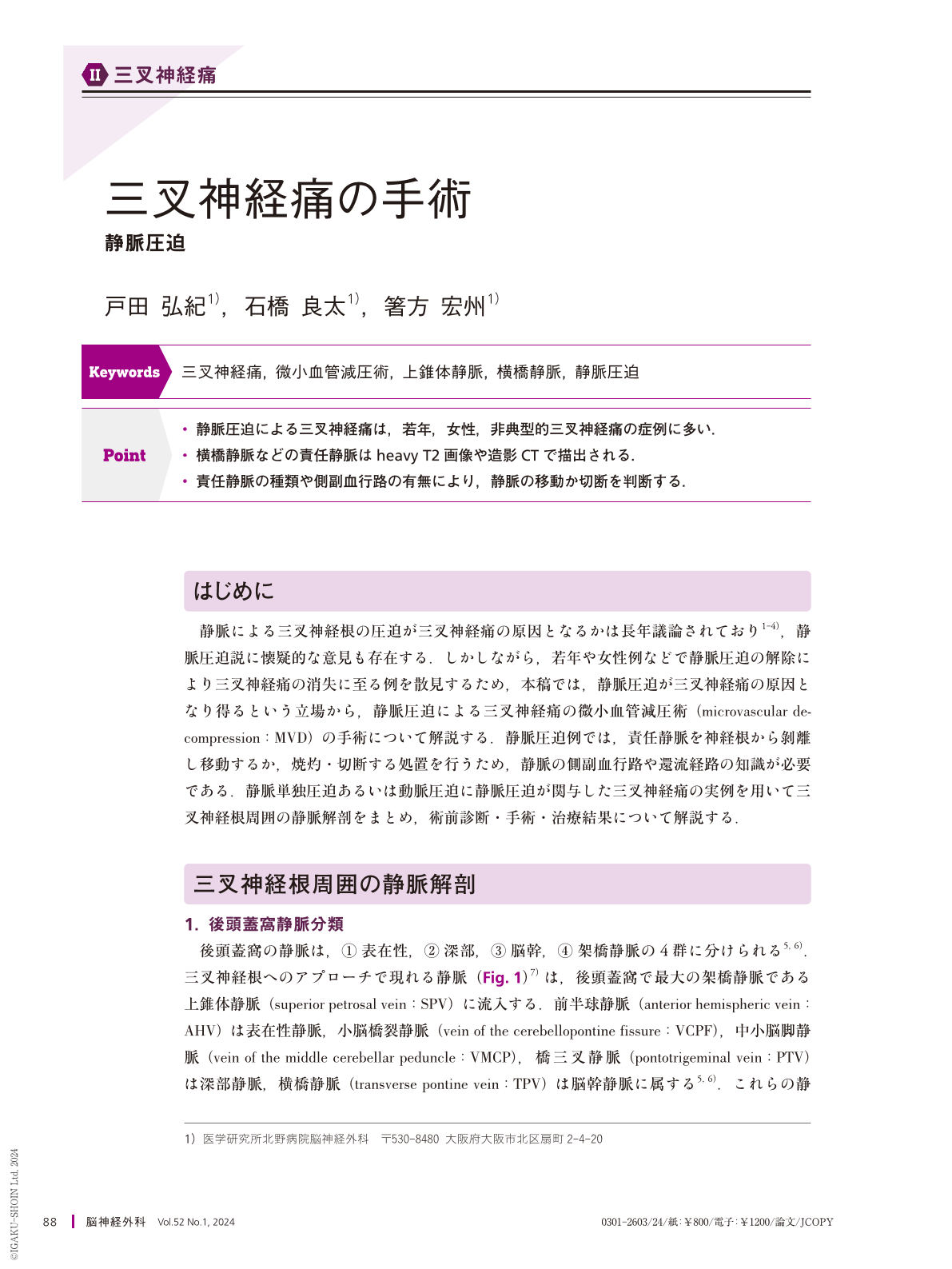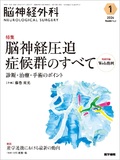Japanese
English
- 有料閲覧
- Abstract 文献概要
- 1ページ目 Look Inside
- 参考文献 Reference
Point
・静脈圧迫による三叉神経痛は,若年,女性,非典型的三叉神経痛の症例に多い.
・横橋静脈などの責任静脈はheavy T2画像や造影CTで描出される.
・責任静脈の種類や側副血行路の有無により,静脈の移動か切断を判断する.
*本論文中、[Video]マークのある図につきましては、関連する動画を見ることができます(公開期間:2027年2月まで)。
In microvascular decompression surgery for trigeminal neuralgia, the veins are essential as an anatomical frame for the microsurgical approach and as an offending vessel to compress the trigeminal nerve. Thorough arachnoid dissection of the superior petrosal vein and its tributaries provides surgical corridors to the trigeminal nerve root and enables the mobilization of the bridging, brainstem, and deep cerebellar veins. It is necessary to protect the trigeminal nerve by coagulating and cutting the offending vein.
We reviewed the clinical features of trigeminal neuralgia caused by venous decompression and its outcomes after microvascular decompression. Among patients with trigeminal neuralgia, 4%-14% have sole venous compression. Atypical or type 2 trigeminal neuralgia may occur in 60%-80% of cases of sole venous compression. Three-dimensional MR cisternography and CT venography can help in detecting the offending vein. The transverse pontine vein is the common offending vein. The surgical cure and recurrence rates of trigeminal neuralgia with venous compression are 64%-75% and 23%, respectively.
Sole venous compression is a unique form of trigeminal neuralgia. Its clinical characteristics differ from those of trigeminal neuralgia caused by arterial compression. Surgical procedures to resolve venous compression include nuances in safely handling venous structures.

Copyright © 2024, Igaku-Shoin Ltd. All rights reserved.


